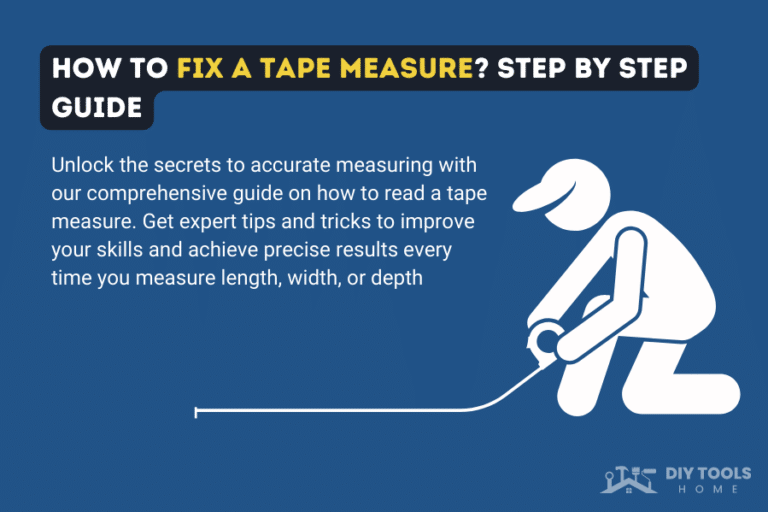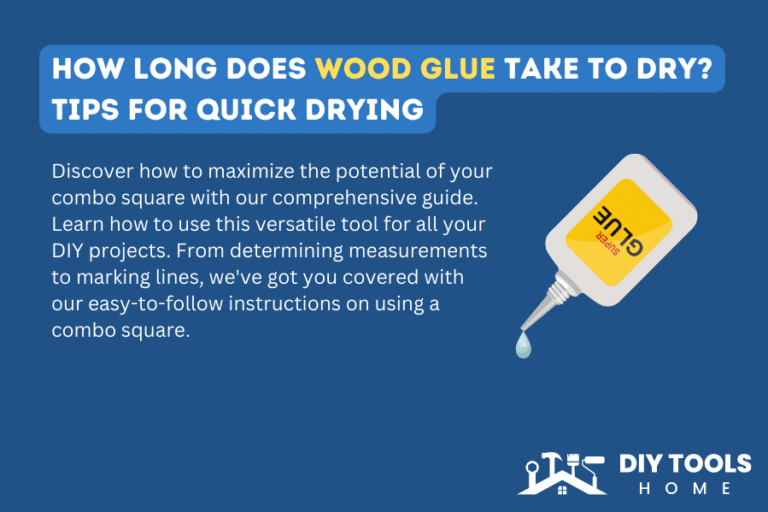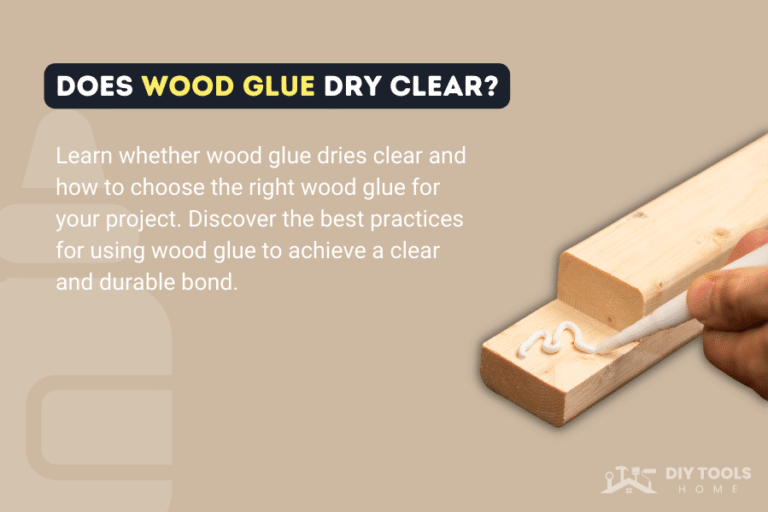How to use a Combination Square for Accurate Measurements?
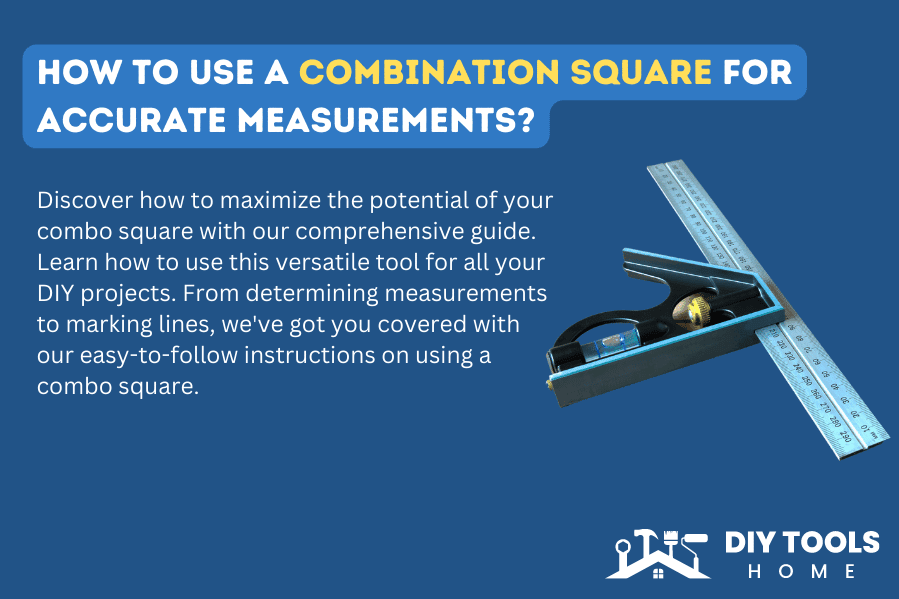
A combination square is a multi-functional tool essential for every handy person to have in their toolbox. This versatile tool performs multiple tasks, making it a great addition to any toolkit, whether you are a woodworker, metalworker, or DIY enthusiast. With its similar functionality to a tape measure, the combination square is easy to read and use for various measuring and marking tasks.
This article will delve into the various uses of a combination square and explore how to get the most out of this indispensable tool. We will cover everything from learning how to use it to understand the key factors to consider when purchasing a new one.
Whether a beginner or an experienced professional, this article will guide you through the world of combo squares and provide valuable insights and tips to help you get the most out of this essential tool.
Combo Square/Combination Square – what is it?
A Combination Square, commonly referred to as a Combo Square, is a measuring tool used for various purposes, such as checking the accuracy of a 90° angle, measuring a 45° angle, determining depth, and taking simple distance measurements. It also has a spirit level vial that helps to find level and plumb.
This versatile tool can be used for various applications, including woodworking, metalworking, stonemasonry, and more.
Combo Square Design
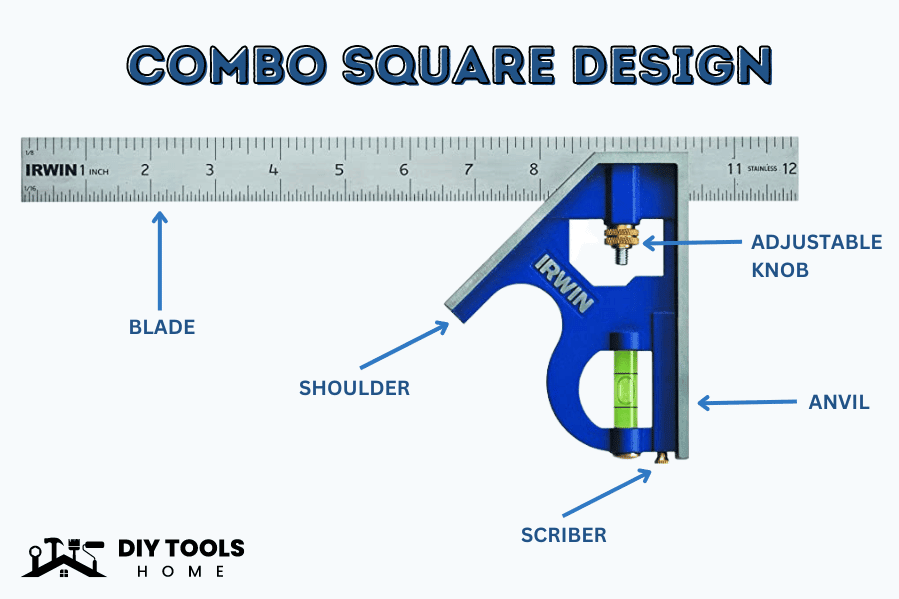
The anatomy of a combination square is made up of several vital components. These include the blade, shoulder, anvil, adjustable knob, and scriber. By understanding the different parts of a combination square, you can better utilize its features and capabilities to achieve more precise and accurate results.
Here’s a quick overview of the combo square components.
1. Blade
A blade or Rule is a straight edge used to check a surface’s flatness and is marked for measuring. Good quality blades are of hardened steel and precisely etched.
2. Shoulder
The shoulder of the combo square is placed 45 degrees from the blade. It is used in the layout and measurement of miters.
3. Anvil
The anvil, also known as the “head,” is placed 90 ° between the blade and itself. You can use it alone or in combination with the blade. The anvil has a draw bolt that holds the rule and is tightened with a thumbscrew.
4. Adjustable Knob
The handle has an adjustable knob that allows it to move freely along the ruler’s edge horizontally.
5. Scriber
The Scriber is present in the head of an anvil. It is a sharp marking tool to scratch or scribe a line precisely.
How to use your Combination Square?
A combination square is not just a measuring tool. It is a multi-functional tool that can perform various tasks, making it indispensable for any DIY or professional project. From marking straight lines to measuring angles, depth, and height, there is no shortage of ways to use a combination square.
Here are just a few of the many uses of a combination square:
1. As a Tri Square
A combination square is an adjustable tri-square that moves up and down the length of the rule. It can measure angles of 90 and 45 degrees which a typical tri-square cannot do it.
If you want to use a combination square to construct 90- and 45-degree angles, ensure the anvil is placed against the wood. The anvil is the portion of the square’s head that makes 90° contact with the wood. The area that touches at a 45-degree angle is the shoulder.
Hold the pencil or knife at a constant angle when you want to mark your line. The line will be out of square if you hold the pencil at a different angle.
2. As a ruler
You can use a combination square, ideally as a regular ruler.
- Lose the adjustable knob.
- Remove the rule.
Here you go!
3. As a depth gauge
Another way to use a combination square is as a depth gauge or a thickness gauge. A depth gauge allows you to determine how deep a hole, channel, or cavity is by spanning over it. A combination square can do the same job.
- Place the anvil against the surface.
- Lose the blade so it can slide to the bottom of the hole.
- Then retighten the adjustable knob.
4. Determine the Center of Round Objects
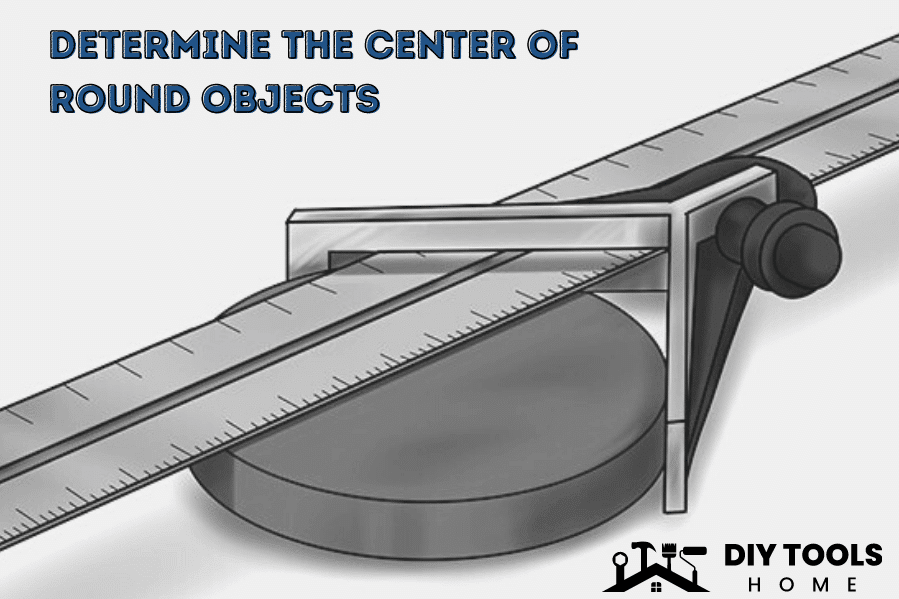
People can use a combination square to determine the center of round objects. If you buy your combo square as a set, get one with a center-finding head with a 90/ 45-degree head. A V-shaped attachment slides on the ruler after you remove the 90/45-degree head.
- Set the combo square on the object with the center head attached.
- Mark the diameter by drawing a line along the blade.
- Now move the square to a new spot and draw a second line.
- The center of the object must be where the lines intersect with each other.
Suppose you need to check if the object is round or not. Then try to make lines with more than two diameters. You can tell an object is round if all its lines intersect simultaneously. The object is only round if they intersect at the same points.
5. As a Level
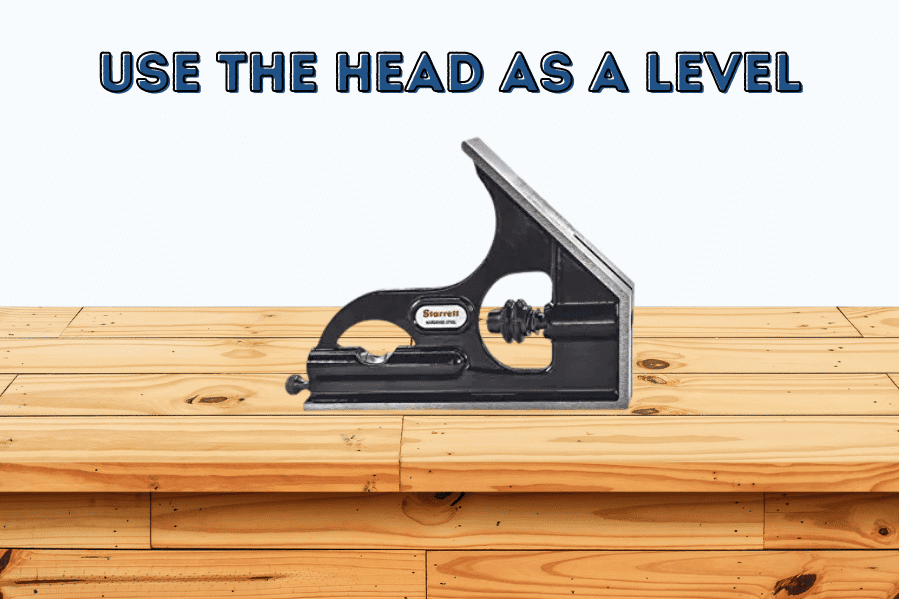
- Lose the knob to separate the handle from the blade.
- Put the anvil against the surface to use it as a level.
- Check the vial to verify that the bubble is in the center.
- If so, then the material is level.
6. Draw a line parallel to the edge of the wood
- Position the anvil of the combo square along the edge of the surface.
- Put the pencil at the end of the blade.
- Apply pressure to the blade rule’s end with the pencil.
- Now move the handle side down the work surface while your pencil follows it.
- After doing this for the desired length, raise your pencil and combo square. And check the parallel line along the working surface.
7. Check for plumb
To check for plumb, do these steps.
- Set the blade’s edge up against a vertical plane.
- The work is plumb if the bubble is in the center of the vial.
Buyer’s Guide for Combo Square
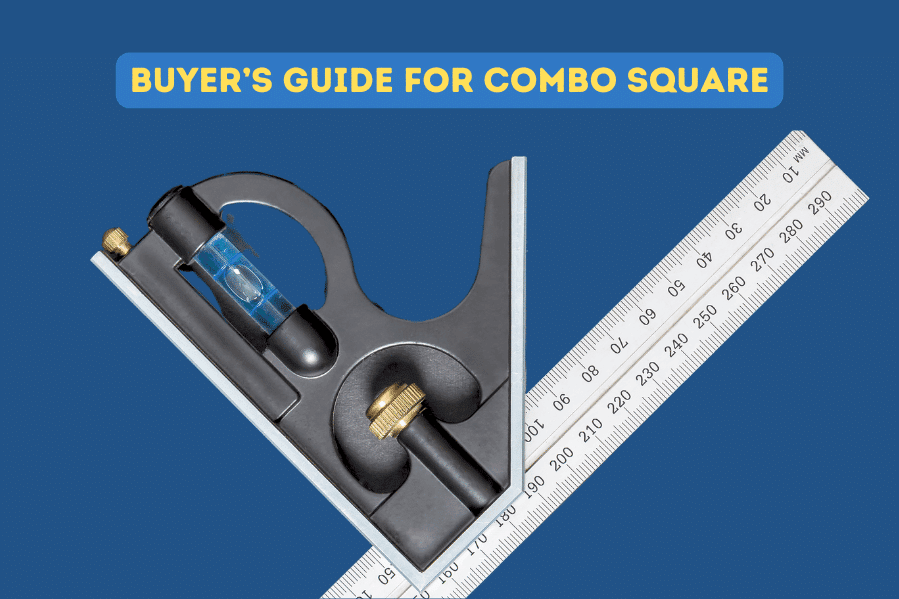
If you are looking to add a combination square to your toolkit, it is essential to choose the right one for your needs. With so many options available, it cannot be easy to know which one to choose. Here is a buyer’s guide to help you find the right combination square for you:
1. Overall Build
Como squares are available in many designs. So, based on the needs of your project, you can go for a protractor head or a center head. If you want to work on a challenging task, ensure your combo square is accurate and robust enough to achieve versatility.
2. Durability
The durability of your combo square is essential. So, make the material of combination square durable. To avoid incorrect measurements, ensure that the square head is secure.
3. Accuracy & Reliability
Your combination square must ensure that it does an accurate job. Accuracy is affected by both the manufacturing process and the tool’s material. Look at the divisions of the blade as well. Inexpensive models are not as accurate.
4. Length & size
Combo squares come in four sizes. The four and six-inch squares may be helpful for small tasks and ideal for carrying around the tool belt. The 16-inch models are best for higher work. If you are dealing with a significant workpiece, a 24-inch model will be a better choice.
5. Price
The combo square is available at a range of prices; most people can afford them. If you need one for personal use, you may get a decent device for less than $100. However, if you wish to improve the efficiency and accuracy of your work, pick an advanced model. These cost more money.
How to take care of your Combo Square?
Conclusion
A combination square is an indispensable tool for any handy person, regardless of their experience level or the type of project they are working on. With its multi-functional capabilities, it is no wonder that carpenters, woodworkers, metalworkers, and DIY enthusiasts rely on this versatile tool to ensure accuracy and precision in their work.
However, it is essential to remember that the combination square should not be used for heavy-duty tasks such as hammering or prying, as this can cause the fittings to loosen and the blade to chip. By following this guideline, you can ensure that your combination square will be a valuable and long-lasting tool in your toolkit.
fAQs
What Size Combination Square Is Best?
The best and most common combination square is 12 inches. It is the most useful for all-purpose use.
How Accurate Is A Combination Square?
High-quality combination squares have an accuracy range of 0.001 to 0.005 inches per inch. Before taking a measurement, hold the square tightly with the blade fixed. This step will give you the highest level of accuracy.
What Is The Little Pin For On A Combination Square?
The removable pointed pin on a combo square is known as a scribe. You can use it to mark measurements on the item being squared.

